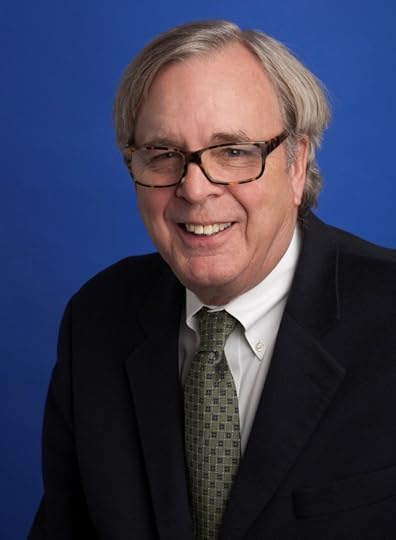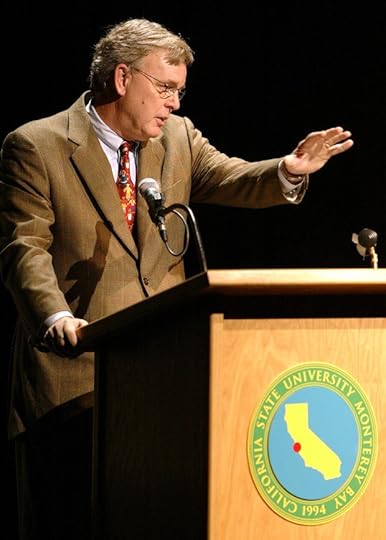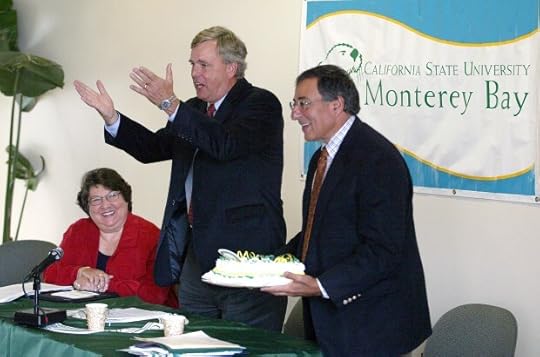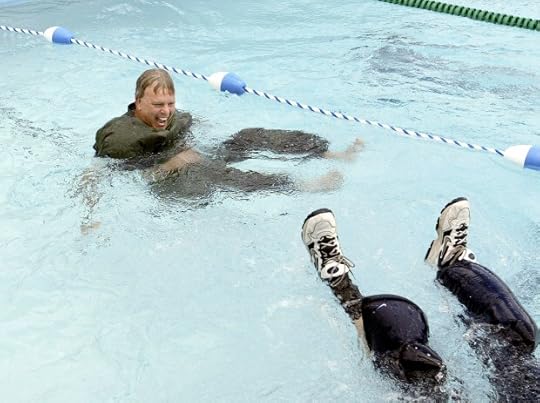30 years after university’s founding: A conversation with Peter Smith, Cal State Monterey Bay’s first president
SEASIDE >> When Cal State Monterey Bay opened its doors to its inaugural cohort 29 years ago, students had everything they needed to succeed: a set curriculum, excited professors, newly-renovated dorms. But, they had nowhere to sit down and eat. Official construction for the university had only begun eight months prior, and the Dining Commons were the last to be finished.
So, founding President Peter Smith and some other faculty bussed a few hundred students to the Big Sur woods for a camping trip to bond and most importantly, wait out the rest of the construction.
Smith and other founders of the school had ambitiously decided to open only a year after the legislation was passed to approve a university on the former Fort Ord base. What followed was a 12-month mad dash to establish what 30 years later, has become a part of the culture on the Monterey Peninsula.
 Peter Smith, founding president of Cal State Monterey Bay. (Courtesy of Peter Smith)
Peter Smith, founding president of Cal State Monterey Bay. (Courtesy of Peter Smith)Hailing from George Washington University in Washington D.C. as the dean of the graduate school of education and having previously founded the Community College of Vermont, the former congressman and lieutenant governor of Vermont had a very clear vision for this university. He moved out west ready to add to the California State University system “the 21st campus for the 21st century.”
Smith, 78, was president of Cal State Monterey Bay from January 1995 through June 2005. He is currently a senior advisor for Yellowdig Inc., an online learning platform for student engagement.
Smith sat down recently with The Herald to talk about some of the founding principles of the school, how those first years went and his thoughts on the university’s current trajectory.
Founding vision
Smith’s vision was “to serve the communities that immediately surrounded it … it was going to be active, learning oriented,” Smith said. He and the founding faculty quickly established service-learning, a community-based volunteer class that is still a requirement for CSUMB students.
As far as the kind of students the school attracted that first semester, “I wanted risk takers. I wanted people who knew they were walking into a situation that was going to be risky … in the beginning, I was interested in getting people who understood what they were walking into and were going to help us grow the place.” That first cohort of risk-takers was made up of 654 students. This year there are around 7,000 students enrolled at CSUMB.
The role of a president
“What I brought was a vision of what 21st century education was going to look like,” Smith said. “That was based on putting the learner first, active, engaged learning, respecting the background that the learner brings with them. In other words, they’re not coming to a university to learn my view of the world. They’re coming to help develop their view of the world based on active learning.
“You’re creating a vision, but then you’re listening to people and modifying the vision.”
 Outgoing CSUMB president Peter Smith giving his last “State of the University” address to staff, faculty and students. (Vern Fisher, Monterey Herald Archive)
Outgoing CSUMB president Peter Smith giving his last “State of the University” address to staff, faculty and students. (Vern Fisher, Monterey Herald Archive)Creating an institutional identity
“I was very conscious, having been through it before, that your personality and your way of thinking about the world and your values may be important to getting the job done, but they’re not the reason why you’re getting the job done,” he said. “They’re not the point. The point is to create an organization with values, culture, capacity and competence that is going to be consistent over time … as I spoke with (current CSUMB President Vanya Quiñones), what I understood, what I got very powerfully, was that there’s things she wants to do better and there may be changes in innovations. I hope there are.
“The place has a culture that will support changes in innovation, but that she now wants to recheck with the communities around CSUMB. Connect with those communities, make sure that the college is a more institutional entity. (And) are we keeping more high school graduates in Monterey and Salinas and up toward Santa Cruz and down into the valley? Are more people staying in the area to work? Because when I started there, more people were leaving and never coming back, and part of it is to grow the social, civic, economic, cultural workforce … and I’ve got a very strong feeling that (Quiñones) sees the communities within which the campus exists as very important.”
A community pillar
“There are no walls around that university. It’s part of the community,” Smith said. “And I think it’s the experiential learning and the service learning and the back and forth. What I felt when I came back (for a visit) almost 20 years after I left, is that the university is not an island in the community. It is part of the community, and there’s a lot of back and forth and its culture is part of the community’s larger culture and cultural events.”
 CSUMB Provost Diane Cordero de Noriega, CSUMB President Peter Smith and Leon Panetta revel in the news that CSUMB is finally a accredited institution. The announcement was made in front of faculty and staff and some alumni at the University Center in 2003. Leon Panetta holds a cake as Peter Smith thanks the attended guests. (Vern Fisher — Monterey Herald Archives)
CSUMB Provost Diane Cordero de Noriega, CSUMB President Peter Smith and Leon Panetta revel in the news that CSUMB is finally a accredited institution. The announcement was made in front of faculty and staff and some alumni at the University Center in 2003. Leon Panetta holds a cake as Peter Smith thanks the attended guests. (Vern Fisher — Monterey Herald Archives)What’s next?
Those paying close attention to CSUMB in the past few years may have noticed a curriculum shift gearing more toward agriculture, hospitality and engineering.
“I think it’s a critical shift, and I noticed it too, just in terms of the number of people and what degree programs they’re in and what they’re doing,” Smith said. “And none of that is to naysay or underestimate technology and marine science and all that stuff, because it’s critically important, too. But there’s more to the Tri-County area than technology and marine science.
“I know some of the things (Quiñones) is doing are very much oriented toward having learners at the campus engaged directly in different employment situations in the county and really focusing on the things that make the economics of the county operate, and tourism is one of them, agriculture is one (as well as) hospitality … but that’s great, you know? Times change and you find new ways to do an old thing and if you do it well, it still works.”
 CSUMB President Peter Smith was pulled into CSUMB’s new pool by Athletic Director Bill Trumbo at the dedication ceremony in 2003. (Vern Fisher, Monterey Herald Archive)
CSUMB President Peter Smith was pulled into CSUMB’s new pool by Athletic Director Bill Trumbo at the dedication ceremony in 2003. (Vern Fisher, Monterey Herald Archive)



